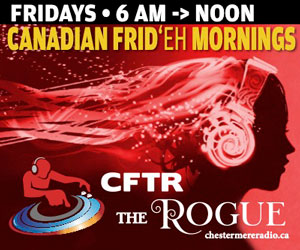With the dog days of summer upon us, your intrepid liquor reporter has been swapping out room temperature red wines for chilled whites at garden parties, soirées, and other outdoor boozing events.
Sure, the holy trinity of white wines have always been Chardonnay, Sauvignon Blanc, and Riesling, but your humble narrator likes to mix things up a bit, so I picked up several bottles of assorted Sémillon wines at my friendly neighbourhood booze merchant, and have been slowly working through them all.
Although nearly impossible for non-Francophones to pronounce (say-mee-yaw), Sémillon is the preeminent white grape in the Bordeaux region of France, where it is usually blended with Sauvignon Blanc and Muscadelle for the famed White Bordeaux wines.
The typical White Bordeaux blend is 80% Sémillon, 20% Sauvignon Blanc, and just a tiny dash of Muscadelle, which makes for a white wine of outstanding complexity and great longevity for aging.
France and Australia are the two largest cultivars of Sémillon grapes, although small amounts are grown in California, South Africa, and even a wee bit in British Columbia’s Okanagan Valley.
Hundreds of years ago, Sémillon was often mistaken for Riesling, and was briefly the most widely cultivated grape in the world, covering over 90% of South African vineyards and more than 75% of Chilean vineyards. As genotyping technology improved, most of the earlier-ripening Sémillon vines were identified and uprooted, leaving only 1% of South African acres under vine planted with Sémillon.
Today, the appeal of Sémillon has become much more specific, as consumer palates have gravitated towards the more tropical notes in Chardonnay and Sauvignon Blanc. Worldwide plantings have dropped pretty much everywhere except France and Australia, where Sémillon still has a strong following.
Your humble narrator first became enamoured with Sémillon after visiting the Bartier Brothers Winery in the Okanagan Valley of BC, where the hot summers and sun-baked hills create the perfect terroir for the Sémillon grape.
The Bartier Brothers Sémillon has become one of my go-to summer wines, with notes of apple blossoms and peach on the nose, followed by green melon on the tongue, with a flinty mineral backbone that holds everything together.
Pairing well with seafoods or salads, the Bartier Brothers Sémillon is made in the dry style, with very little residual sugar, and one of my favourites in the $25 range.
Further from home, the Sauternes region of Bordeaux is famous for producing sweet white wines made from the Sémillon grape, due to its susceptibility to the Botrytis fungus, also known as Noble Rot.
The Sémillon grape is thin-skinned, with low acidity and plenty of sugar in the fruit. When exposed to the Botrytis fungus, the grapes shrivel up, losing most of their water, which concentrates the remaining sugars and acids in the pulp.
Unfortunately, the Sémillon grape is prone to all sorts of different fungal infections, but it is only the “Noble Rot” caused by the Botrytis Cinerea fungus that is beneficial to the winemaking process, so crafty vintners will often spray the vines with Botrytis spores near the end of the growing season to intentionally affect the grapes.
Once the grapes are shriveled up, they are harvested by hand and pressed to produce a complex concentrated sweet white wine, which commands significantly higher prices on the open market. Expect to pay 100-500% more for a wine that has been affected by Noble Rot, just because the process is much more labour-intensive and the yields are so much lower.
While Sémillon grapes are not the only varietal to be affected by Noble Rot, they are particularly susceptible, which makes them highly prized by winemakers.
Your humble narrator tends to stick to the Australian Sémillon, in no small part because Scrooge McDuck and Daddy Warbucks are the only ones that can buy a White Bordeaux without breaking the bank. Aussie Sémillon can be found in the $20-$30 range, while French Sémillon tends to start at $50, and quickly goes up to stratospheric levels.
So, if you have had one too many Chardonnay that is bursting with flavours of green apple, or one too many Sauvignon Blanc bursting with flavours of gooseberry, treat your palate to the more muted and refined flavours of Sémillon, a wine enjoyed by kings and commoners alike over the centuries, and sure to be enjoyed by many more in the years to come.





